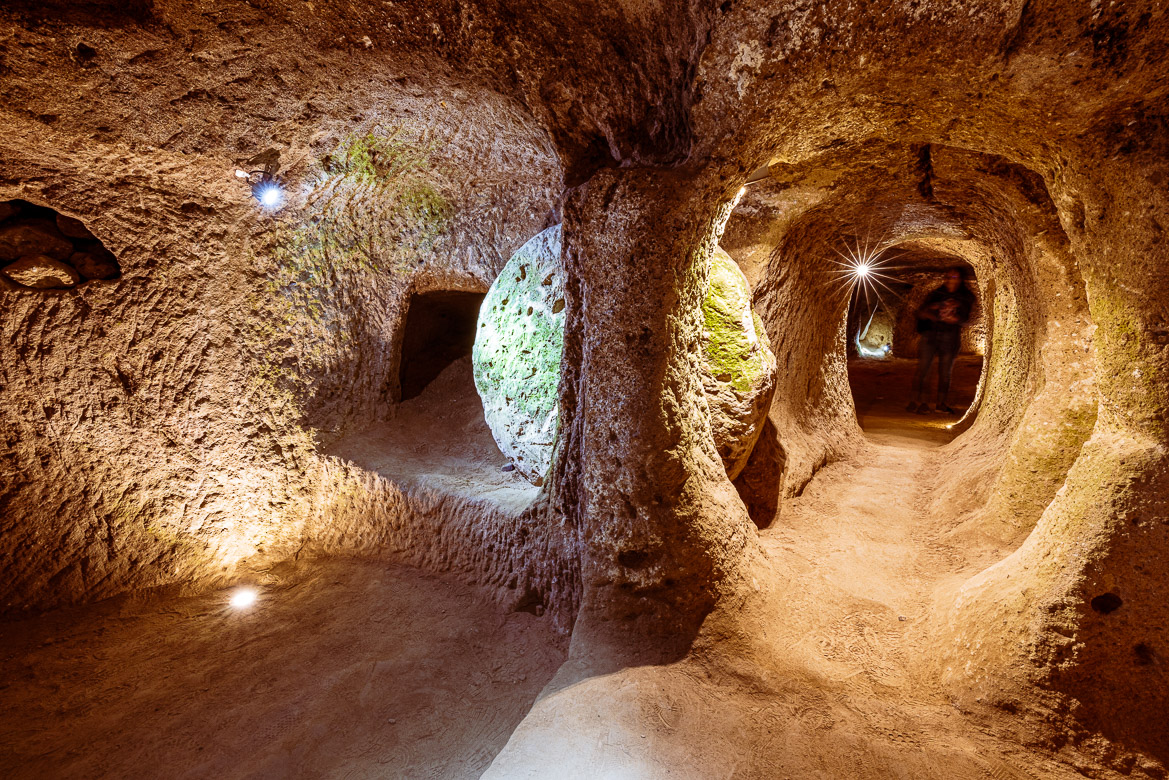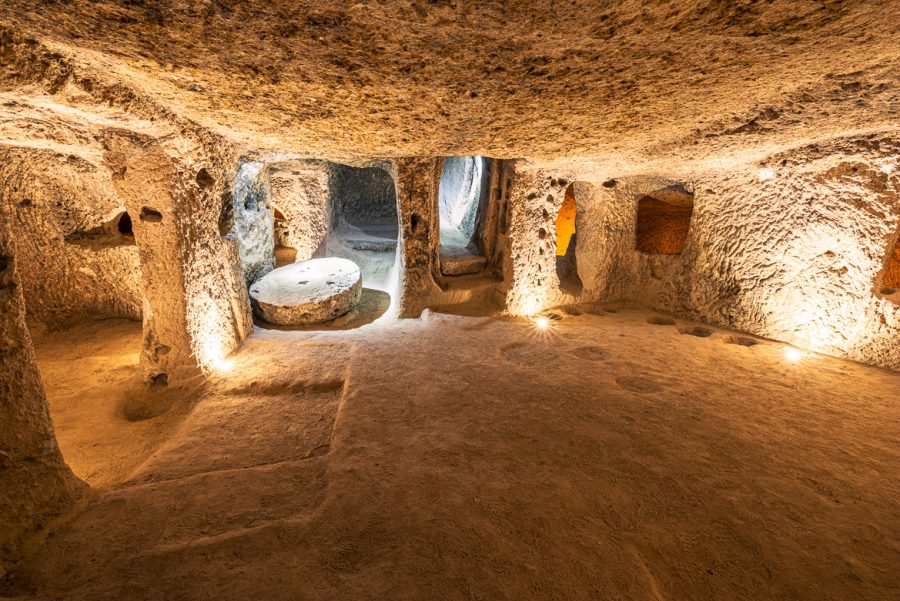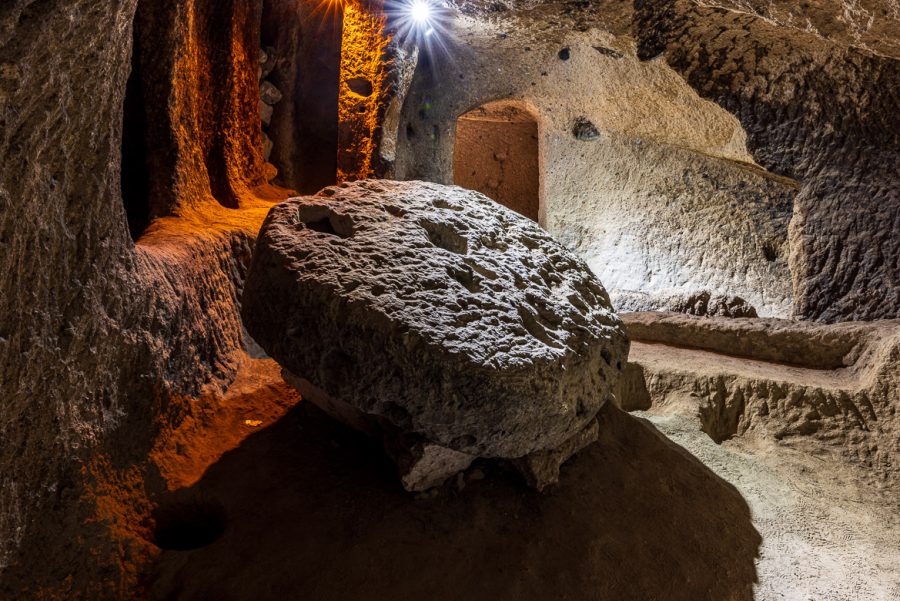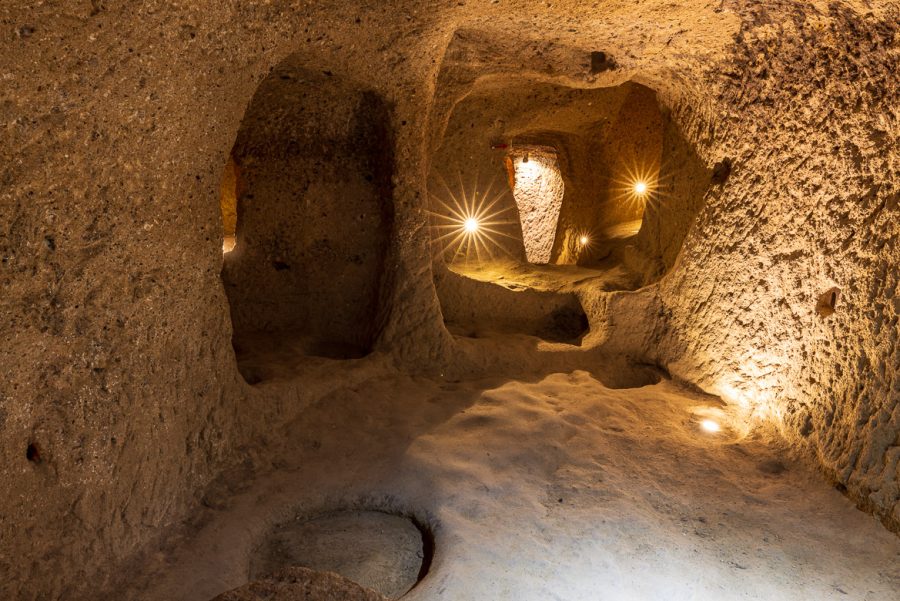
I continue with a few more posts from Cappadocia. Its fascinating landscape offers both a very rich history and lots of natural beauty with its horses and its geological formations.
The soft volcanic tuff and the harder basalt provides another unique phenomena for this region – a marvel of gargantuan proportions has been hidden for centuries – whole subterranean cities that could conceal as many as 20,000 inhabitants for months at a time. These cave cities have now been added to the UNESCO World Heritage List.
The groundwork for this sprawling network of subterranean caves is often attributed to the Hittites, who probably excavated the first levels as far back as around 1200 BC. The first written document is by Xenophon of Athens 370 BC. Xenophon talks about Anatolian people in or near the region of Cappadocia living underground in excavated homes, rather than the more normal cliffside cave-dwellings that I have documented before in several of my posts from last year.


They were used during the Byzantine era by the early Christians, who were persecuted because of their faith. And then again by Christians who used the network of caves to protect themselves from Muslims/Arabs during the Arab-Byzantine wars between 800 – 1200 AD.
The largest city goes down 85 metres below ground level and had 18 levels of tunnels and was in near constant use for thousands of years changing hands from Phrygians to Persians to Christians. They were finally abandoned in the 1920s by the Cappadocian Greeks when they faced defeat during the Greek-Turkish war and the Greeks were forced to abruptly flee across to Greece. The cave-like rooms stretch for hundreds of miles but were forgotten by the Turks (or never discovered by them) until they were “rediscovered” in 1963.


Now many of them have been excavated and the underground dwellings, dry food storage, cattle stables, schools, wineries and chapels have been thoroughly documented. Some of these cities are possible to visit, although it is difficult to crawl around inside these systems of tunnels without feeling a little claustrophobic. There are few places were Jennifer could stand up and even fewer where I wasn’t forced to crawl. And the backpacks with tripod, camera, lenses and flashlights had to be dragged behind us to get into some of intricating areas.
The caves and passages were lit up by lightbulbs and rather than using the flashlights I had my camera on tripod and the exposure time is between 5 and 20 seconds. In retrospect I regret I didn’t include a hulking Jennifer in any of the pictures to give you a better understanding of the size of the passages, but there is also a small church and other meeting places, where larger groups of people could convene.





